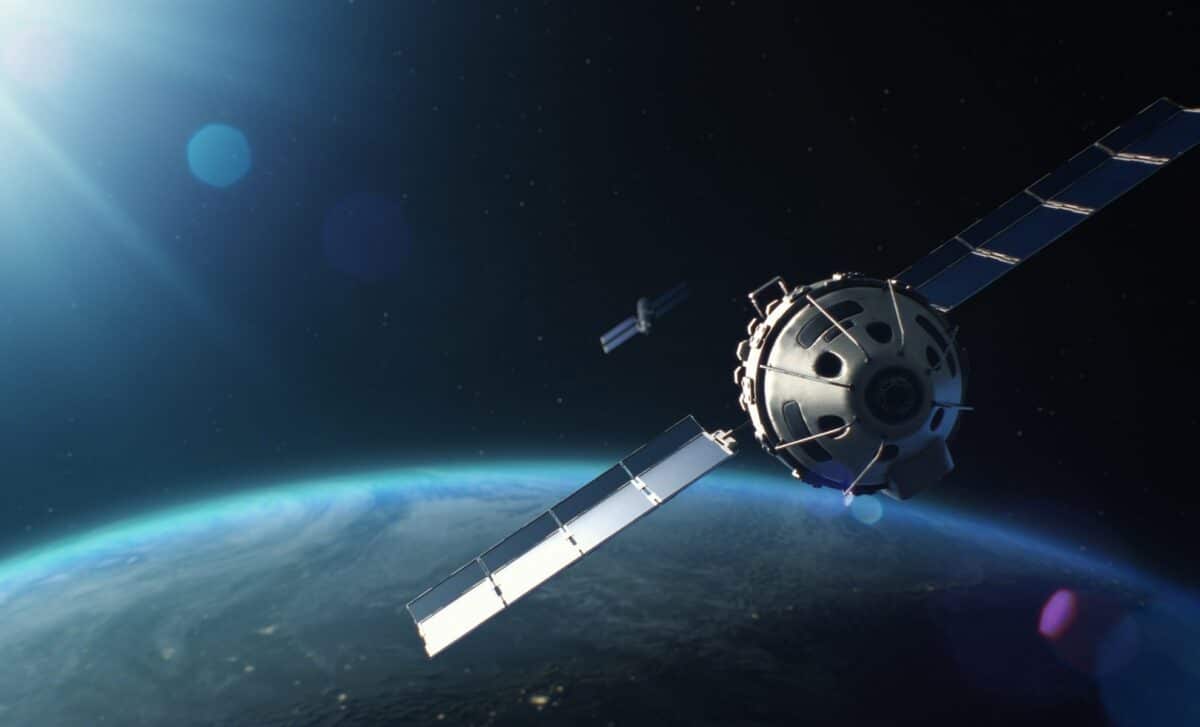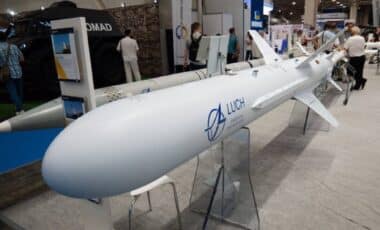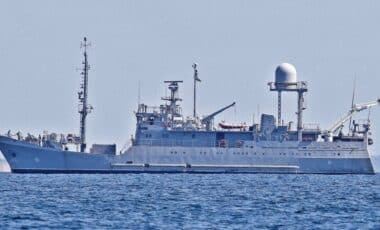A recently launched Russian satellite, Cosmos 2588, has come dangerously close to a U.S. reconnaissance satellite, USA 338, sparking concerns within the U.S. Space Command. The proximity of these two satellites has led to suspicions that Russia may be testing anti-satellite weaponry in orbit. The incident, which follows a pattern of similar actions by Russia, highlights growing tensions in space.
Cosmos 2588, launched on May 23, entered a near-circular orbit that placed it just a few hundred kilometers away from USA 338. This development has prompted the U.S. to monitor the situation closely, as such actions have raised fears of espionage or even the deployment of counter-space technologies. U.S. Space Command confirmed the satellite’s orbit and warned that Russia continues to research and deploy systems that threaten space stability. This event is not an isolated one, with similar incidents taking place in previous years.
US Air Force Marks Milestone with First EA-37B Electronic Attack Sortie
Alleged Stalking of U.S. Satellite by Cosmos 2588
According to Slingshot Aerospace, Cosmos 2588 is believed to be a military inspection satellite, potentially equipped with a kinetic weapon. The satellite is tracking USA 338 at a slightly higher altitude and approaches it every four days, getting as close as 62 miles (100 kilometers). This alignment, experts claim, strongly suggests that Cosmos 2588 may be actively monitoring or following the U.S. satellite. The proximity and repeated flybys have drawn attention from space situational awareness experts, including Marco Langbroek, an astronomer from the Netherlands.
This isn’t the first time Russia has been accused of deploying satellites to trail U.S. spacecraft. Similar encounters were reported in 2023, 2022, and 2020, with Russian satellites positioning themselves close to U.S. reconnaissance satellites. These actions are seen by some experts as part of a broader strategy to develop and test anti-satellite systems.
History of Russia’s Satellite Encounters
The issue of satellites following other satellites in orbit is not new. In fact, this is the fourth time in five years that Russia has launched a satellite into a coplanar orbit with a U.S. optical reconnaissance satellite, wrote Marco Langbroekan, astronomer and expert on space situational awareness at the Delft University of Technology in the Netherlands, on X.
Such repeated behavior has led to suspicions that Russia is deliberately positioning its satellites for observation or potential interference. In the past, satellites like Kosmos 2558 and Kosmos 2542 were also deployed into the same orbital planes as U.S. military satellites, further fueling these concerns.
Notably, Russia’s actions coincide with its controversial efforts to develop anti-satellite (ASAT) weapons. In 2021, Russia conducted a missile test that destroyed an old satellite, generating thousands of debris pieces in low Earth orbit. This test led to international condemnation, and the U.N. passed a resolution against ASAT missile tests. However, Russia continues to oppose such measures, emphasizing its interest in advancing its space warfare capabilities.
U.S. Space Situational Awareness and Response
The U.S. Space Command has been closely monitoring space activities that could pose a threat to national security. The proximity of Cosmos 2588 to USA 338 has raised red flags, and Space Command has indicated that it will continue to track these developments. A spokesperson confirmed that the U.S. is aware of the Russian satellite’s positioning and will keep a vigilant eye on any concerning behavior. While there is no confirmation yet of malicious intent, the situation remains under scrutiny.
The U.S. has also faced similar accusations in the past. In 2017, a classified U.S. military satellite approached the International Space Station at a close distance, which led to some public questions about its purpose. While the U.S. and Russia have both been involved in close encounters in space, the rising frequency of such incidents underscores the increasingly contested nature of space.








